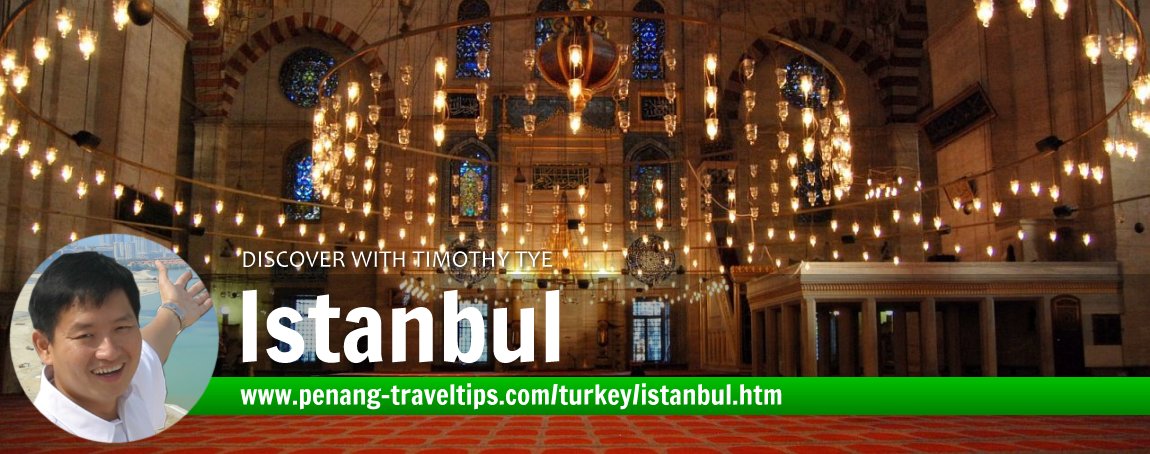 Interior of the Süleymaniye Mosque, Istanbul
Interior of the Süleymaniye Mosque, IstanbulSource: https://commons.wikimedia.org/wiki/File:S%C3%BCleymaniye_mosque_interior_Istanbul_Turkey.jpg
Author: Takeaway
Author: Takeaway

Istanbul is the biggest city in Turkey. It has a metropolitan area of 5,343 sq km (2,069 sq mi). The urban population of Istanbul is 14.8 million people (2011 estimate), constituting 17.8% of Turkey's population.
Istanbul is located in northwestern Turkey. It is on the Bosphorus Strait that connects the Black Sea to the north with the Sea of Marmara, which flows into the Aegean Sea and then into the Mediterranean Sea. The Bosphorus Straits separates the European part of Turkey (Thrace) from the Asian (Anatolia).
Instanbul experiences a Mediterranean climate. Its hottest months are July and August, when the average temperature hovers around 23°C (73°F). The coldest months are January and February, with average temperatures of around 4°C (39°F). The wettest month is December, with 123.9 mm (4.8 in) of precipitation, often in the form of snow.
The modern city of Instanbul comprises 39 districts of the Instanbul Metropolitan Municipality. At the very heart of the city is an inlet of the Bosphorus called the Golden Horn. The city has many historic buildings, primarily in the Byzantine and Ottoman architectural style, but also those bearing Greek, Roman and Genoese influences.
The history of Istanbul goes back to the Neolithic period. The city is said to have been founded in 660 BC when King Byzas established the city, called Byzantium in Latin, on the European side of the Bosphorus Strait. Byzantium became part of the Roman Empire in AD 73.
Members' Travel Shots of Istanbul
Join the Penang Facebook Group and post your travel shots to be archived according to location.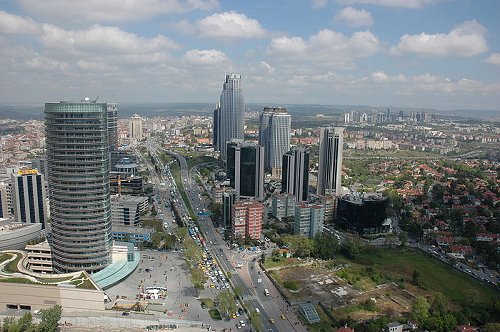 Modern Istanbul skyline
Modern Istanbul skylineSource: https://commons.wikimedia.org/wiki/File:Resim_083.jpg
Author: Photographer1
Author: Photographer1

 Maiden Tower, Istanbul
Maiden Tower, IstanbulSource: https://commons.wikimedia.org/wiki/File:Maiden_tower.JPG
Author: Mkaraarslan
Author: Mkaraarslan

When Constantine I became emperor of the whole Roman Empire in AD 324, he created a new Christian city to replace Byzantium. He called it Nea Roma, meaning "New Rome", but the city instead became popularly known as Constantinople, meaning "City of Constantine". The name Constantinople was to persist well into the 20th century. In AD 330, it became the capital of the Eastern Roman Empire, also called the Byzantine Empire. During this period, Constantinople became a center for Greek culture and for Christianity. It was also during this period that many of Instanbul's great churches was built, among them, the Hagia Sofia.
Constantinople was one of the biggest and most powerful city in the Middle Ages. The decline of Constantinope began after the Fourth Crusade (which was Roman Catholic) conquered the city (which was Eastern Orthodox) in April 1204, and established the Latin Empire. Then on 29 May, 1453, it was captured by Sultan Mehmed II after an eight-week siege. The fall of Constantinople brought an end to its role as a Christian capital. The Muslim conquerors made it the new capital of the Ottoman Empire. The Hagia Sofia was converted from a cathedral into a mosque.
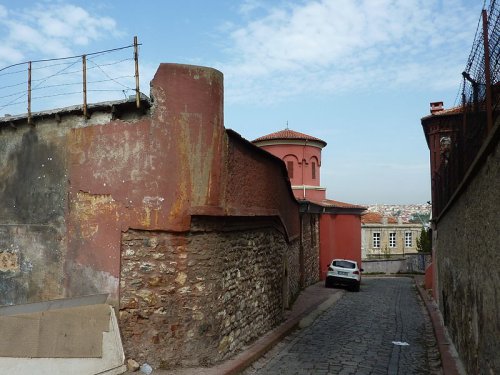 Church of St Mary of the Mongols, Istanbul
Church of St Mary of the Mongols, IstanbulSource: https://commons.wikimedia.org/wiki/File:St_Mary_of_the_Mongols_-_outside_-P1030399.JPG
Author: Vmenkov
Author: Vmenkov

Under the Ottomans, Constantinople was renamed Istanbul. It was transformed to become the center of Islamic culture. In 1566, the Süleymaniye Mosque was constructed, marking the pinnacle of Ottoman power. From then on the empire began a slow decline, shrinking in size and power.
Constantinople was occupied by Allied forces following World War I. On 1 November, 1922, the new Turkish parliament abolished the Sultanate, bringing an end to 623 years of Ottoman rule. At the same time, Instanbul lost its position as capital, as the new Republic of Turkey has its capital in Ankara.
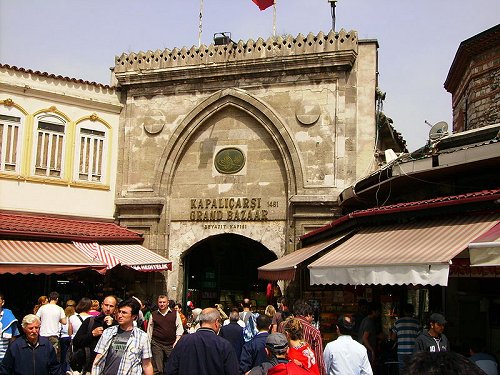 The Grand Bazaar of Istanbul
The Grand Bazaar of IstanbulSource: https://commons.wikimedia.org/wiki/File:Grand_Bazaar_Istanbul_Turkey_2007.JPG
Author: Graham Bould
Author: Graham Bould

Visiting Istanbul
Most visitors arrive at the Istanbul Atatürk Airport (IST), located about 20 km to the west of the city center. Probably the most convenient way to reach downtown Instanbul is to take the express shuttle buses, called Havaş, that connect the airport to the city. The fare is 10 TL. In comparison fare for public buses between the airport and the city is just 2.50 TL. There is also the metro or light rail station serving the airport. However the metro station is about 10 minutes' walk from the baggage claim.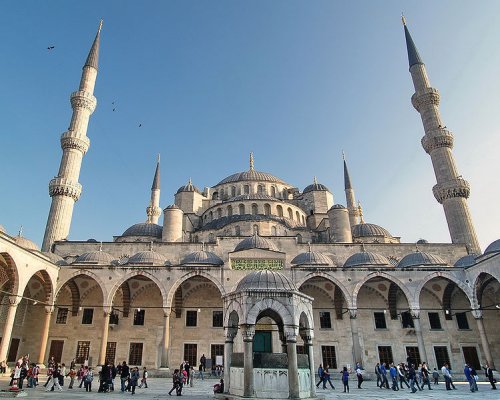 Sultan Ahmed Mosque (The Blue Mosque), Istanbul
Sultan Ahmed Mosque (The Blue Mosque), IstanbulSource: https://commons.wikimedia.org/wiki/File:SultanAhmetMosqueCourtyard.jpg
Author: Edal Anton Lefterov
Author: Edal Anton Lefterov

Exploring Istanbul
Public transport in Istanbul is not the easiest to understand - if you don't speak the language, but it's worth attempting if you prefer not to splurge on taxis. The fare for metro, trams and buses are all at a flat rate regardless distance. If you are going to use public transport extensively, you should get the stored-value device called AKBÌL. It can be used to pay for your rides on all the aforementioned transportation modes.Places of Interest in Istanbul, Turkey
- Basilica Cistern
- Church of St Savior in Chora
- Galata Tower
- Galata Whirling Dervish Hall
- Hagia Sophia
- Istanbul Modern Art Museum
- Istiklal Avenue
- Maiden's Tower
- Military Museum
- Miniaturk
- Sultan Ahmed Mosque (Blue Mosque)
- Sultanahmet Square
- Theodosian Walls
- Topkapi Palace
Neighborhoods of Istanbul
- Sultanahmet (Old City)
- Bosphorus
- Galata
- Golden Horn
- New Istanbul
- Princes' Islands
 Latest updates on Penang Travel Tips
Latest updates on Penang Travel Tips
 Map of Roads in Penang
Map of Roads in Penang
Looking for information on Penang? Use this Map of Roads in Penang to zoom in on information about Penang, brought to you road by road.
Copyright © 2003-2025 Timothy Tye. All Rights Reserved.

 Go Back
Go Back